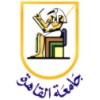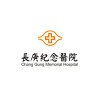
The Effect of Robot-assisted Gait Training on Gait Ability in Children With Cerebral Palsy Through...
Cerebral PalsyGait Disorders2 moreRobot-assisted gait training (RAGT) improves the gait ability of children with cerebral palsy, and can provide treatment plans and guidelines through changed records of various gait variables. There is a lack of concrete explanations or arguments for gait speed, weight support ratio, support force, joint angle, etc. that can be set in the RAGT system, and intervention intensity for an appropriate intervention program has not been presented. Therefore, in this study, we would like to suggest clinically effective interventions for children with cerebral palsy in the second stage of the gross motor function classification system (GMFCS) by identifying gait variables according to differences in gait speed during RAGT.

Seat Cushions Adaptations on Upper Extremity Function In Cerebral Palsy Children
Cerebral PalsyAs the seating adaptations, ranging from simple to complex, standard and customized may facilitate optimal health and maximize functional participation despite limited postural control; the study will be conducted for determine the effect of contoured cushions as a seat adaptation on upper extremity function in children with spastic cerebral palsy and compare between the effect of flat cushion and contoured cushion in adaptive seating system on upper extremity function in children with spastic cerebral palsy.

Effects of Botulinum Toxin Injection on Sensation and Postural Control in Children With Hemiplegic...
Cerebral PalsyHemiplegic Cerebral PalsyIn this study, the investigators aimed to investigate the effects of botulinum neurotoxin type A (BoNT-A) injection applied to the ankle plantar flexor muscles on lower extremity sensation and quantitative balance parameters in children with spastic hemiplegic cerebral palsy who are ambulatory without an assistive device in daily life.

RT001 in Patients With Progressive Supranuclear Palsy (PSP) PROGRESSIVE SUPRANUCLEAR PALSY
Progressive Supranuclear PalsyThis is a randomized, placebo-controlled trial of RT001 in patients with PSP.

Improving Ambulatory Community Access After Paralysis
StrokePartial Paralysis3 moreThe purpose of this research study is to evaluate the effectiveness of functional electrical stimulation (FES) provided by an implanted pulse generator (IPG) in correcting hip, knee and ankle function to improve walking in people with partial paralysis.

Strength Training Using Neuromuscular Electrical Stimulation For Children With Cerebral Palsy
Spastic Diplegic Cerebral PalsyThe purpose of this study is to determine if using high-intensity, short-duration, intermittent neuromuscular electrical stimulation (NMES) is better than volitional exercise in increasing quadriceps femoris and triceps surae force-generating potential and gross motor function in children with cerebral palsy.

Motor Disability of Children With Cerebral Palsy Using Motor Transcranial Magnetic Stimulation
Cerebral PalsyTranscranial magnetic stimulation (TMS) has opened new potential avenues for the treatment of neuropsychiatric diseases via the effects of modulation on neuroplasticity. Repetitive TMS (rTMS) is a non-invasive method of stimulation neural pathways in the brain of conscious subjects through the intact scalp. The investigators hypothesize that excitatory rTMS applied over the motor cortex would increase motor cortex activity and result in an increase in the inhibitory input through the corticospinal tract to the spinal cord, thus reducing alpha neuron hyperactivity and consequently clinical spasticity. In this study, the investigators will apply the stimulation on the legs motor cortex area, which can cover supplemental motor area (SMA). Therefore, not only the spasticity, but also the motor control of legs both can be modulated by stimulation. Theta burst stimulation is a condition of rTMS which was designed by the co-investigator. It has controllable, consistent, long-lasting, and powerful effects on motor cortex physiology and behavior. The investigators therefore design this protocol using theta burst stimulation on the motor cortex of the patients of cerebral palsy. The investigators expect that there would be an effect on the reduction of spasticity after rTMS on the brain of children with CP, thus improving the motor control of legs.

Impact of an Education Program for Parents of Children With Cerebral Palsy
Cerebral PalsyThe Physical Therapy for children with Cerebral Palsy is of great complexity, in addition to improving the neuromotor components at the level of structure and body function, must empower them to carry out their activities and daily tasks and enable their social participation. In this way, the goals of Physical Therapy are related to promote the independence and functionality of the individual in situations of daily life. The participation of caregivers in the rehabilitation process can contribute to potentiate the gains obtained by physical therapy as well as to which they are incorporated into the day to day management of children with cerebral palsy. Objective: To assess whether Physical Therapy associated with the education of caregivers is effective in improving the functioning and quality of life of children with cerebral palsy. Hypothesis: The combination of Physical therapy with the education of caregivers improves in 15% the parameters analyzed against only 10% in those who are only Physical Therapy. Methods: 60 children with cerebral palsy after acceptance and signature in the term of informed consent will be randomly divided into 2 groups (G1: Physiotherapy and education of caregivers and G2: only Physical Therapy) to do 3 sessions of Physical Therapy and 1 weekly session of group education with duration of 45 min during 12 consecutive weeks. The evaluation will be carried out by means of the System of Classification of Motor Function Gross (GMFCS), the evaluation of Motor Function through the scale GMFM-88 (Gross Motor Function Measure - 88 ) and the Activity and Participation will be evaluated by the Inventory of Evaluation of Pediatric Disability (PEDI). The analysis of the results will be carried out using the Statistical Package for the Social Sciences (SPSS) using descriptive statistics for social and demographic characteristics and inferential for normality of data (test Kolmogorov-Smirnov ), mean comparison test to check for differences between the groups and measures of association through the coefficient of correlation. The level of significance of 5% will be established

Working Memory Training for Children With Cerebral Palsy
Cerebral PalsyCerebral palsy (CP) is the most common motor disability in childhood (2-3 per 1000 live born), and is frequently accompanied by cognitive impairments and behavioural problems. The present study is a controlled clinical trial, a multicenter-study involving three health regions, as well as the Norwegian University of Science and Technology (NTNU). Its primary research goal will be to evaluate the effects of computer-based cognitive training in children with CP. In addition, this study will be the first to conduct a comprehensive neuropsychological examination to improve our understanding of cognitive impairments as well as cognitive resources in CP children in Norway to aid in intervention planning.

Innovative Game-Aided Rehabilitation Platform for Rehabilitation of Balance in Children With Cerebral...
Cerebral PalsyThe research project focuses on the evaluation of an engaging computer game-aided rehabilitation platform for use in rehabilitation of young children with cerebral palsy. The goal of this research program is to produce high quality therapeutic point-of-care approaches and cost-effective delivery systems leading to better long-term health outcomes. At present, the challenges entailed in providing therapy services continue to put identified children at risk of missing opportunities to maximize the neurodevelopmental capacities, sustain any behavioral recovery and prevent future complications.The program is grounded on the technological developments and on current research documenting the benefits of computer-aided learning tools, exercise gaming applications in rehabilitation and principles of adaptive learning and neuroplasticity. A randomized controlled trial (RCT) will be conducted to study the feasibility and effectiveness of a computer game-aided rehabilitation platform (CGR) for a repetitive task practice (RTP) protocol designed for training of balance in young children with Cerebral Palsy (CP).
